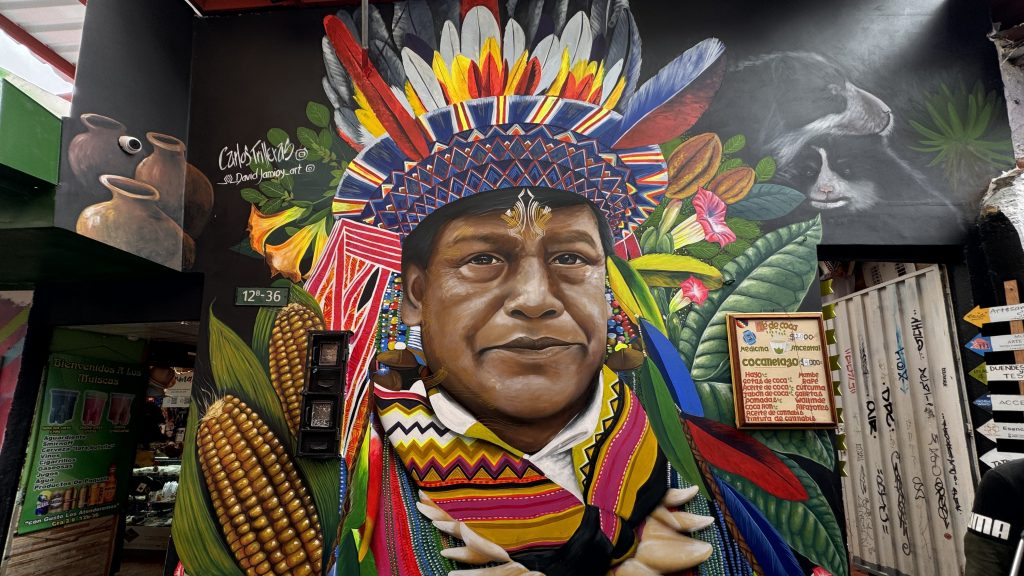
After wrapping up a yoga retreat in Colombia (see: Colombia: From Cartagena to Barichara), I added 2 days in Bogotá to get a taste of the capital. The city mixes modern high-rises with colonial plazas, bursts of street art, and traffic that never lets up. Even in a short Bogotá itinerary, there’s plenty to dive into—coffee culture, colorful markets, and neighborhoods like La Candelaria and Zona Rosa, each with its own personality.
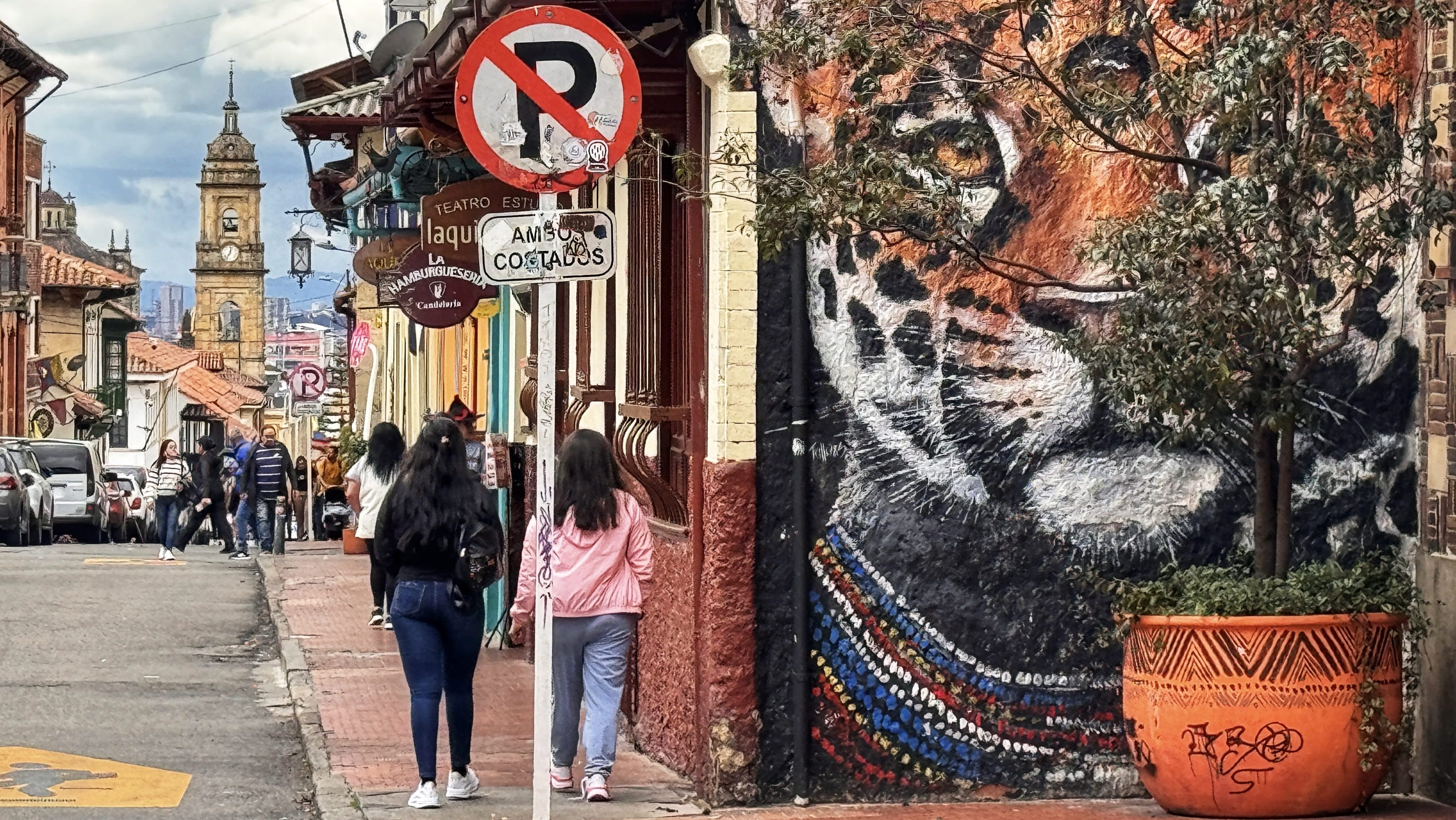
Bogotá is divided into distinct zones, each with its own character. La Candelaria is the historic district, with colonial plazas, museums, and streets full of murals and student energy. Chapinero is more modern and eclectic, known for its cafés, restaurants, and nightlife. Usaquén, once a separate village, still feels quieter and small-town, with cobblestone streets and a well-known Sunday market.
Generally, the farther north you go, the more polished and businesslike the city becomes, while the south is more working-class and less on the tourist map. It’s a mix of old and new, lively and laid-back, all folded into one sprawling capital.
On a trip to Morocco last year, I met a woman from Colombia. She was originally from Bogotá but now lives in Florida. When I told her I was planning to add a couple of solo days in the capital after my retreat, she didn’t think it was the best idea. She warned me that Bogotá can be dangerous, especially for a woman traveling alone. Her advice was that if I did go, at the very least I should stay in Zona Rosa or Chapinero, two of the safer neighborhoods in the city’s north.
So I decided on Zona Rosa—packed with shops and restaurants, the neighborhood felt lively but comfortable, and I didn’t feel out of place on my own. I stayed at Hotel NH Bogotá Boheme Royal, which was both comfortable and convenient—an ideal base for a short solo stay in such a sprawling city.
Since I didn’t leave Cartagena until the afternoon, by the time I caught my flight, landed in Bogotá, and made it through traffic with a cab ride, there wasn’t much daylight left. I didn’t have time for museums or sightseeing, so I kept things simple and explored the area around my hotel. Zona Rosa is lively even on a weeknight, with people shopping, walking between the big malls like Andino and El Retiro, and sitting outside at cafés along the sidewalks.
When I got hungry, I didn’t have to go far. The neighborhood is packed with restaurants, and I settled on Le Biferia Steak House—not exactly the place you’d expect to find good vegetarian food, but it turned out to be a great choice. I had grilled avocado with cilantro-lime sauce, plantains, and a mojito. Everything was fantastic, and honestly, months later I’m still dreaming about that avocado.

The next morning before heading out, I enjoyed the hotel’s breakfast buffet, which included a huge selection of fresh fruit, vegetable and fruit juices, cereals, eggs, and the usual breakfast fare.

I had arranged a full-day private tour through Tours by Locals. We covered a mix of sights around the city—history, culture, and daily life—but one of the main focuses was La Candelaria. My guide knew I loved street art and thought this neighborhood, with its walls of murals, would be right up my alley.
My guide picked me up at the hotel and our first stop was Paloquemao Market, just a short drive from the city center. It’s the second-largest market in Bogotá and definitely worth checking out if you’re in town. Food is such a big part of life in Colombia, and this market proves it. There were rows of stalls selling everything—exotic fruits, fresh produce, meat, fish, and flowers adding bursts of color everywhere you looked. The air even smelled faintly of the flowers, which was a nice touch.
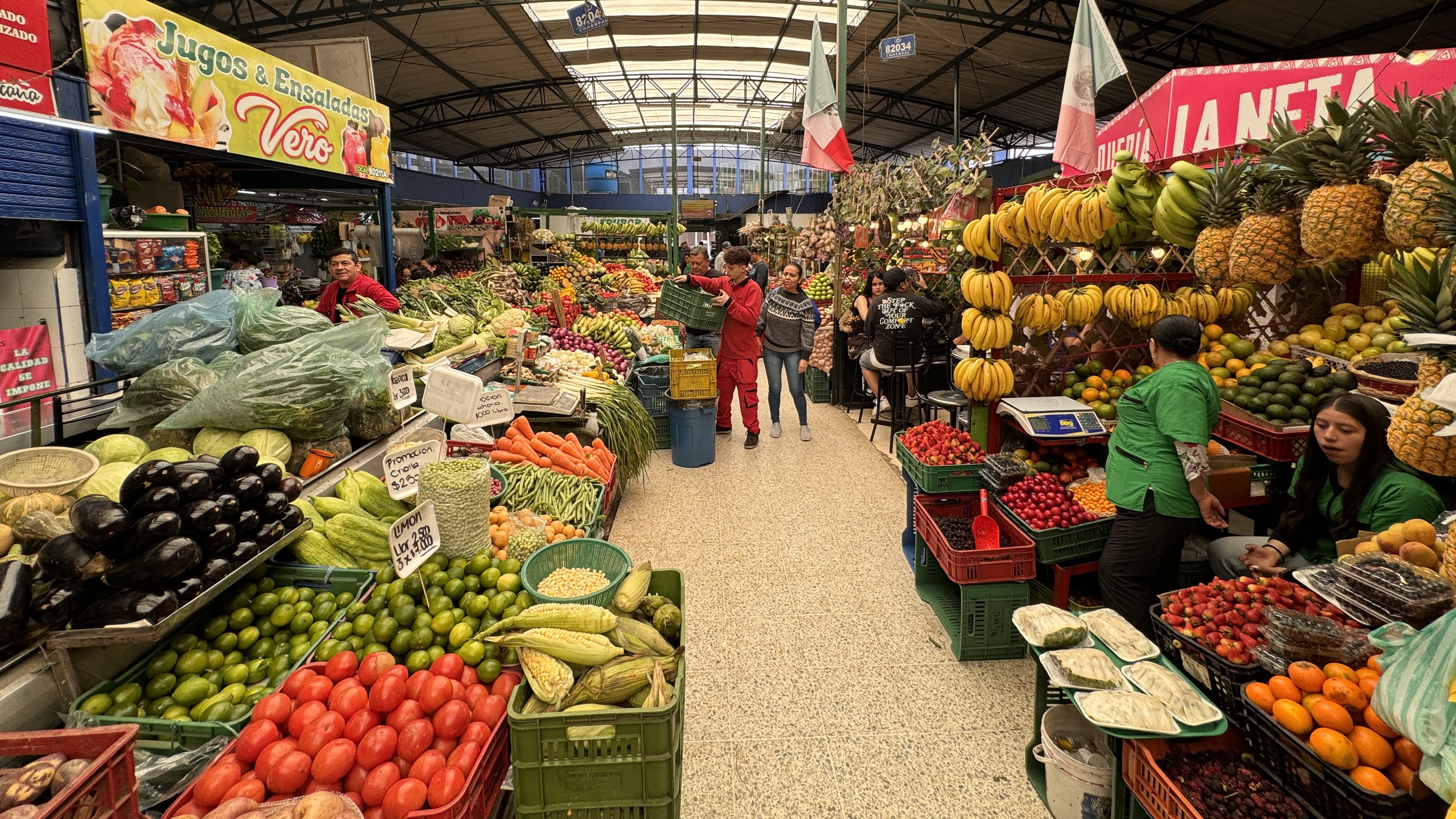

Colombia is the second-largest flower exporter in the world, shipping millions of roses to the U.S., especially before Valentine’s Day. Whole aisles here were piled high with roses, carnations, and orchids in every shade imaginable.
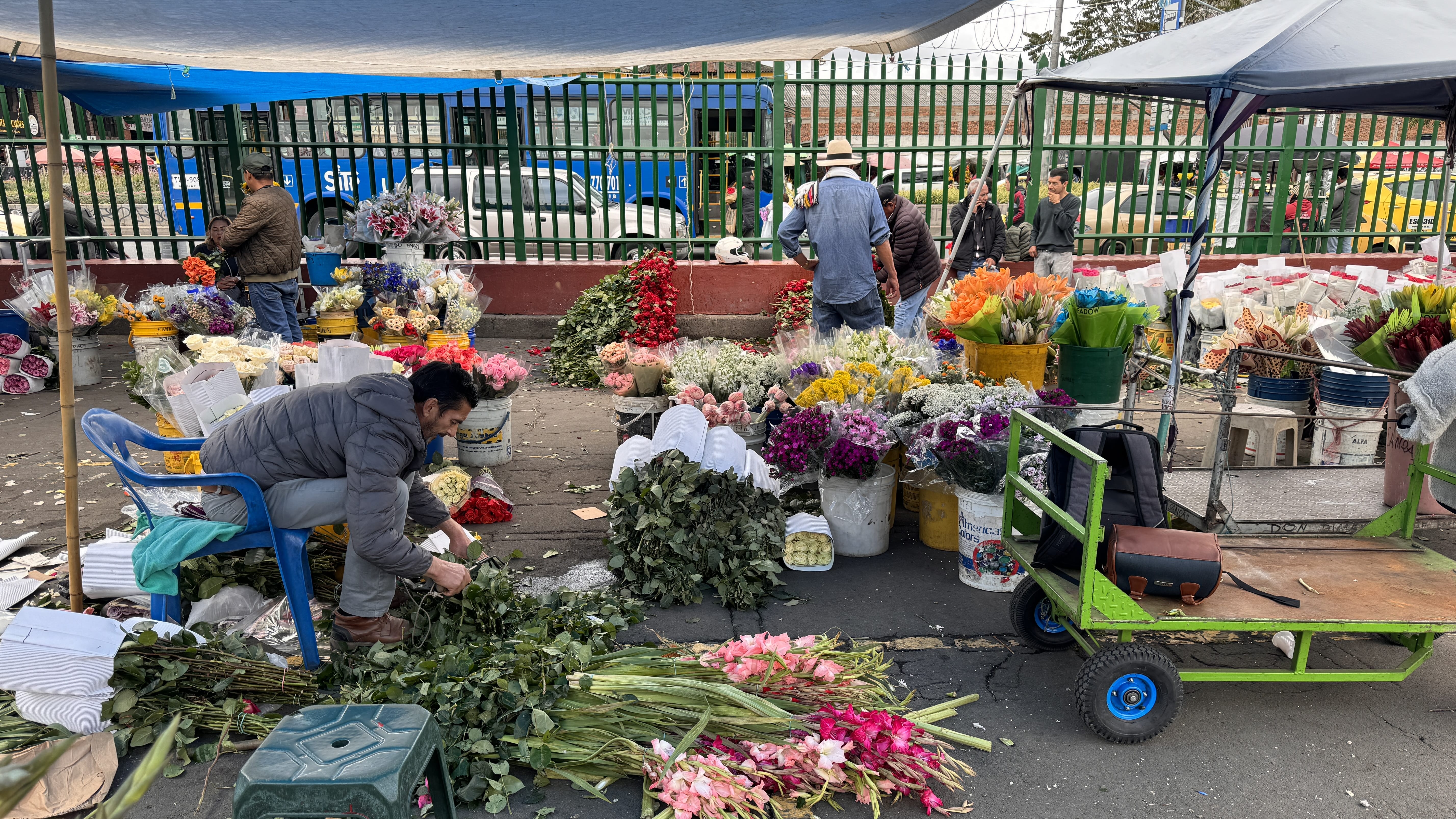
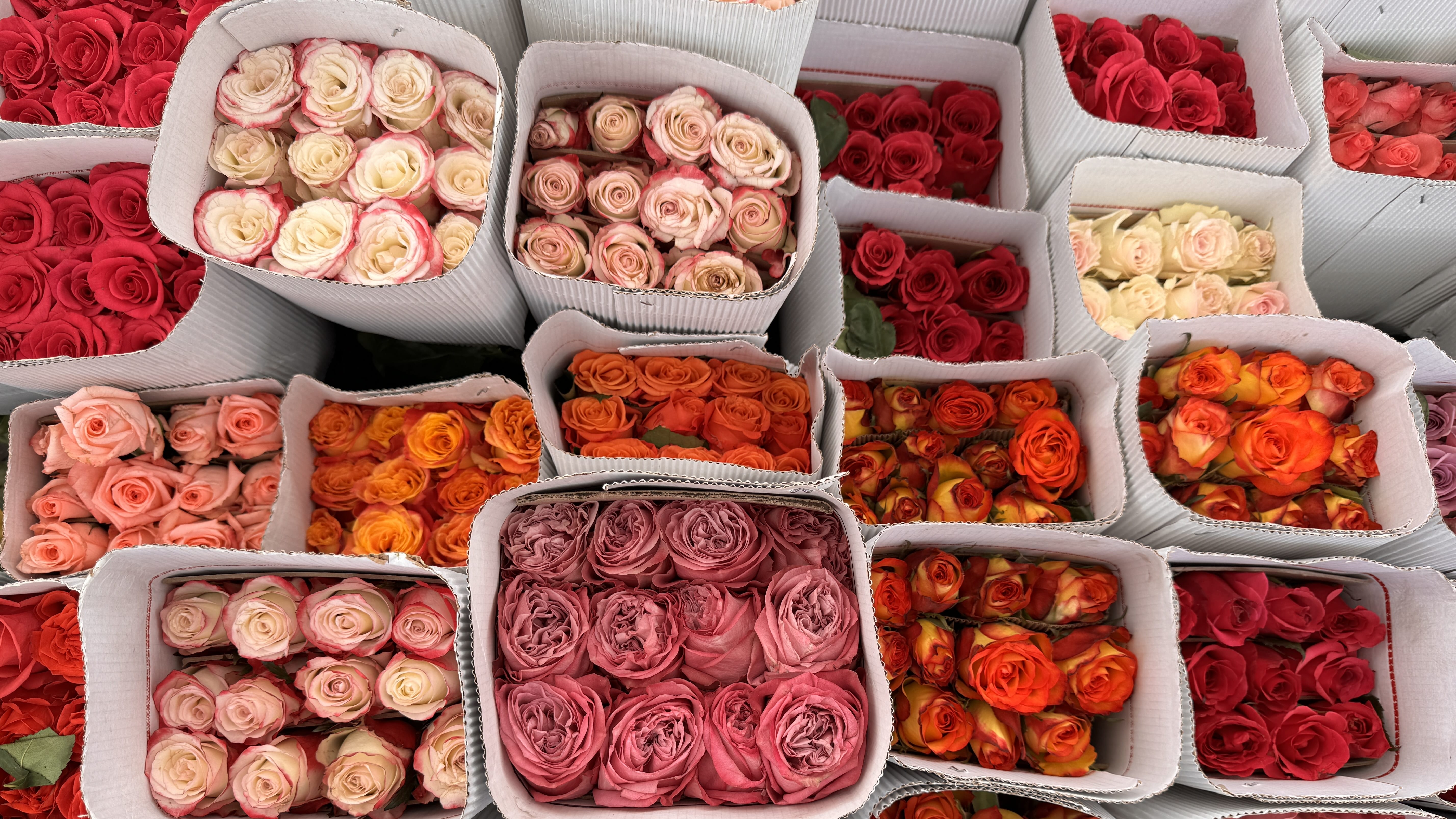
Vendors sold all the Colombian staples—arepas filled with cheese, empanadas, warm pandebonos. The long lines told me exactly how good they were. I tried a pandebono, still hot, and it was excellent. It was fun wandering the aisles, sampling fruit, and watching vendors banter with their regulars.

From the market we headed to Café de la Fonda, named after the old roadside inns where travelers and their mules would stop to rest. From the outside it looked unassuming—just a simple red awning and barred windows—but the magic was in the roasting room.
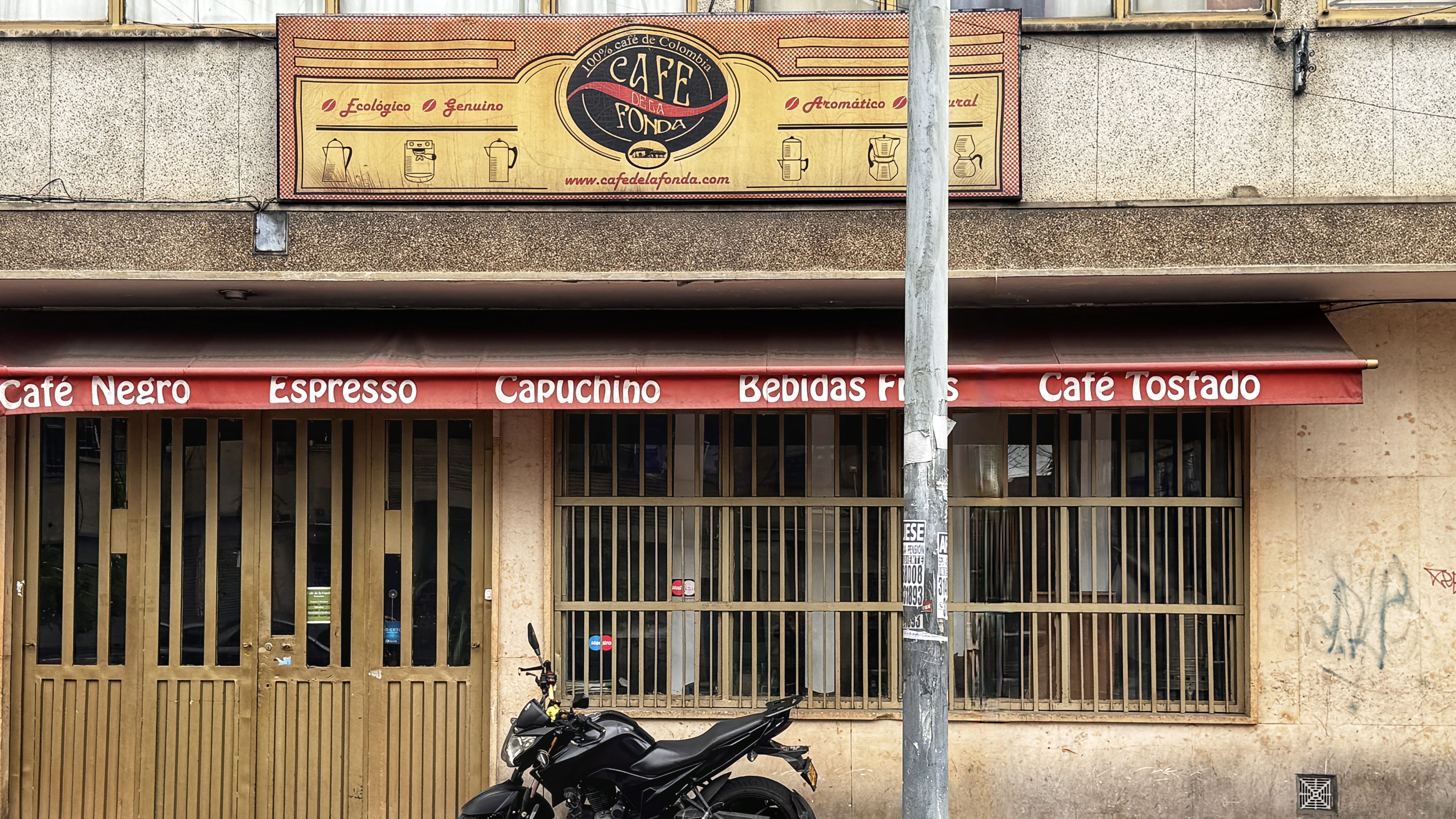
Coffee isn’t just a drink in Colombia; it’s part of the country’s identity. Colombia is one of the world’s largest coffee producers, with beans grown high in the Andes where the climate and soil are ideal.
Inside the café, I got a quick look at their process: burlap sacks of raw beans stacked along the wall, the roasting machine spinning as the beans darkened and filled the air with that nutty, almost chocolatey smell. At one point, I scooped up a handful straight from the roaster—still warm to the touch. Between the rich aromas and the cheeky retro signs hanging around (“Coffee! because crack isn’t allowed in the workplace”), the place had this no-frills, working-café energy that I loved.

They also sold bags of their beans, freshly roasted and ready to take home. I would’ve happily loaded up, but with limited space in my backpack I had to settle for 2 small bag. (One of those travel regrets you think about every time you brew coffee back home).
And then, the cappuccino. Smooth, rich, and foamy, with just a dusting of cinnamon on top. It was one of those cups that ruins you a little bit for the future—like, will I ever have one this good again? But then again, this was Colombia—maybe it was exactly what I should have expected.
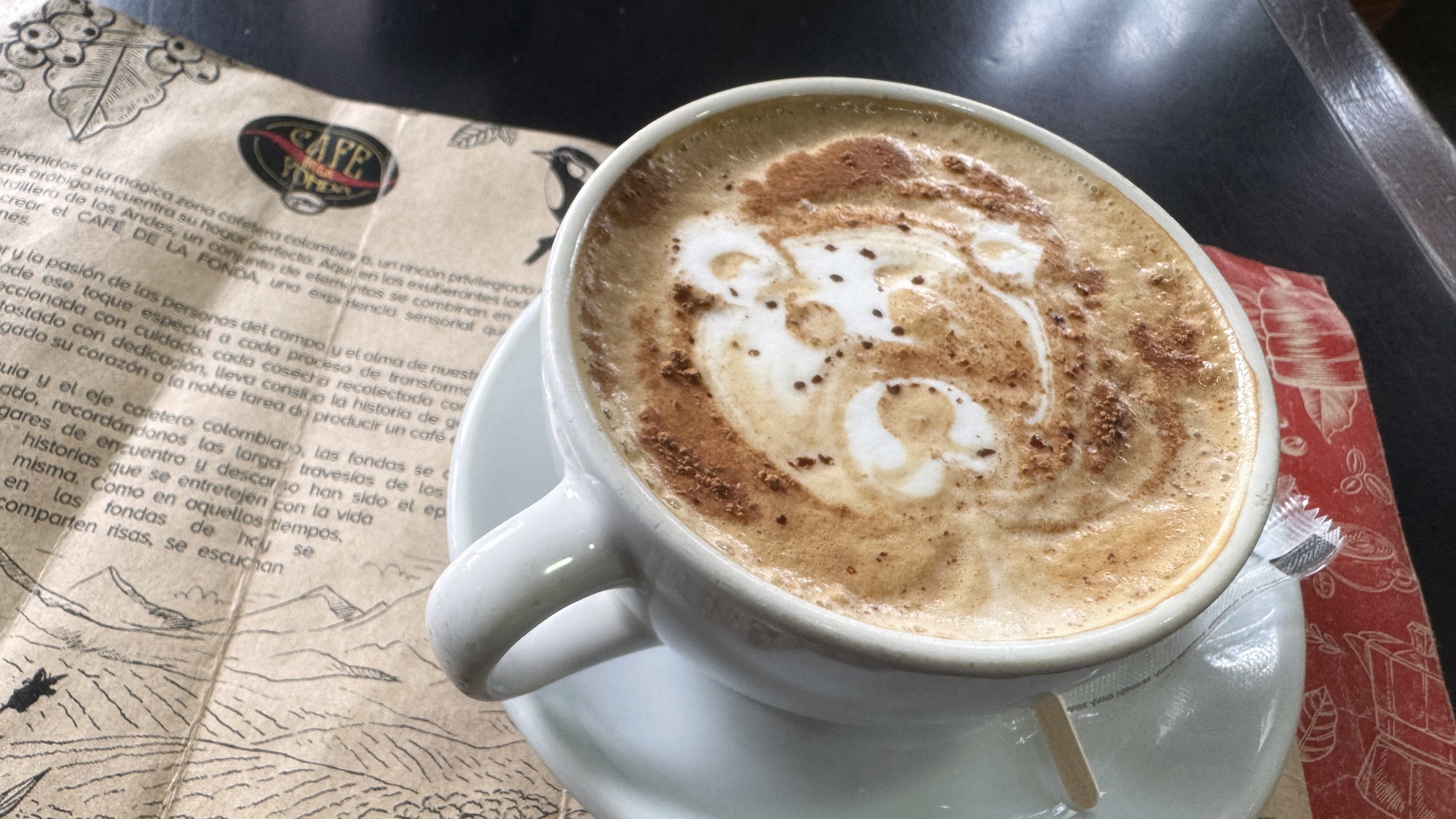
My tour happened to take place on a Sunday, which meant we passed by several streets closed to cars for Bogotá’s weekly Ciclovía. From 7 a.m. to 2 p.m., the city opens its main roads to bikes, joggers, skaters, and families out for a stroll. It’s such a simple idea—closing the streets to traffic for a few hours—but the effect is huge. Honestly, I wish more cities would adopt this tradition.
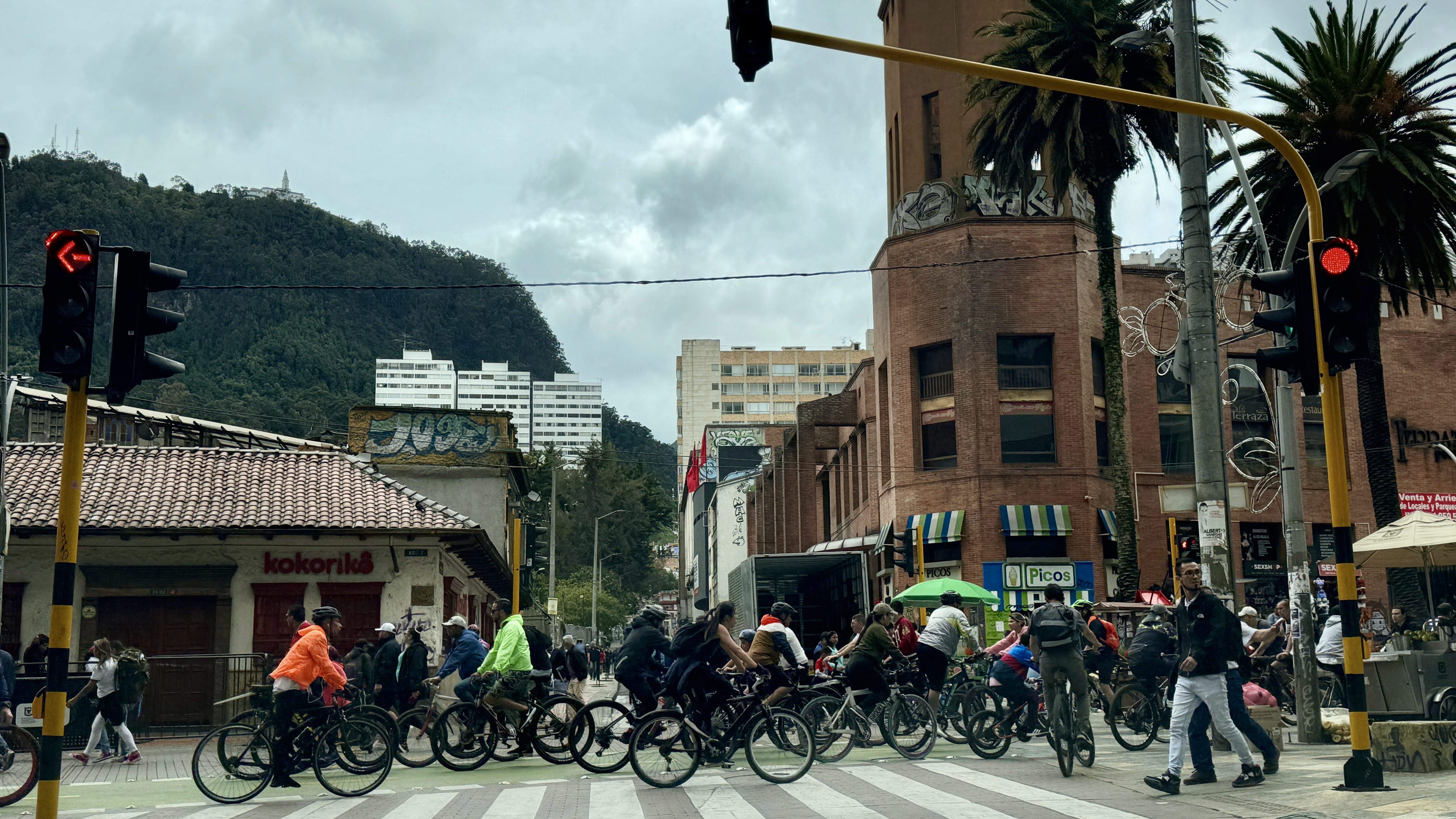
We stopped at the Iglesia de San Francisco, the oldest church still standing in Bogotá. Construction began in 1557, and it’s one of the few colonial buildings to survive the city’s earthquakes and rebuilding. Inside, the 17th-century gilded altar was stunning—massive carved wood entirely covered in gold leaf. The nave is lined with dark wooden pews, and the side chapels hold smaller altarpieces and religious paintings.

From there we headed into La Candelaria, Bogotá’s historic district. The streets were narrow and uneven, lined with old buildings now covered in murals and street art, mixed in with cafés, bookstores, and small museums. The area had a worn-in, everyday feel, with locals and visitors weaving through the colorful alleys.


Murals stretched across walls and alleyways, turning the neighborhood into an outdoor gallery. Some were abstract, others carried cultural weight—indigenous faces, historical figures, political messages. The colors stood out against the older buildings, layering contemporary voices over colonial walls. This land was once home to the Muisca people, and today the city also draws Indigenous communities from across Colombia, like the Wayuu and Embera, whose traditions and symbols often find their way into Bogotá’s art.



Overhead, decorations gave each block its own personality: one street was strung with colorful umbrellas, another with rows of woven baskets lit from within, and another with flags from all over the world fluttering above.
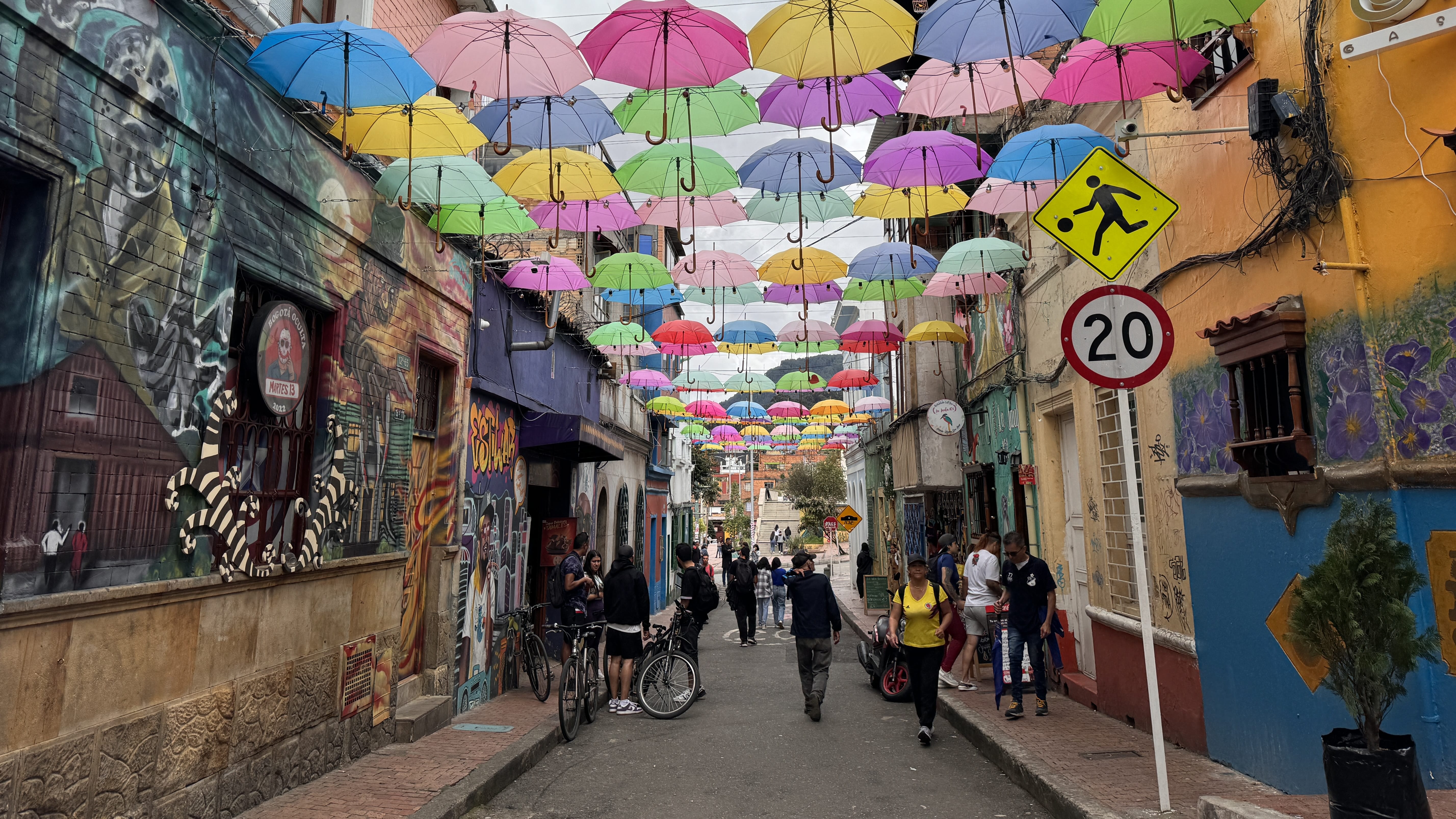

Between the murals on the walls and the decorations hanging over the alleys, the whole area felt like a celebration of art and community set against Bogotá’s historic backdrop.
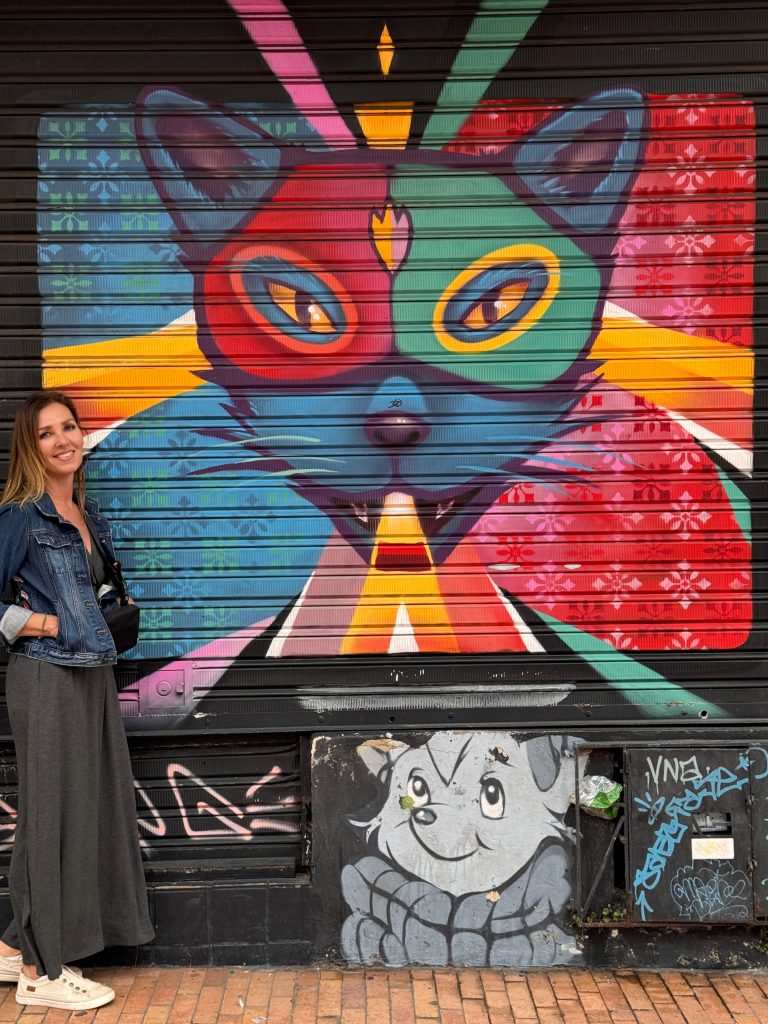
Along the way, we crossed paths with a group of student musicians in traditional dress—long black capes covered with ribbons and badges, guitars slung over their shoulders. The tradition dates back to medieval Spain and Portugal, carried on by Colombian universities today.

Some of the street vendors were selling bottles of chicha, a traditional corn-based drink that goes back to pre-Columbian times. The bottles were lined up in bright orange and red shades, each with a mismatched cap, looking unmistakably homemade. I didn’t try it, but I learned it’s been around since the Muisca people, who were brewing it long before the Spanish arrived. For much of the 20th century the government tried to stamp it out, pushing beer instead, but it’s made a comeback in recent years.
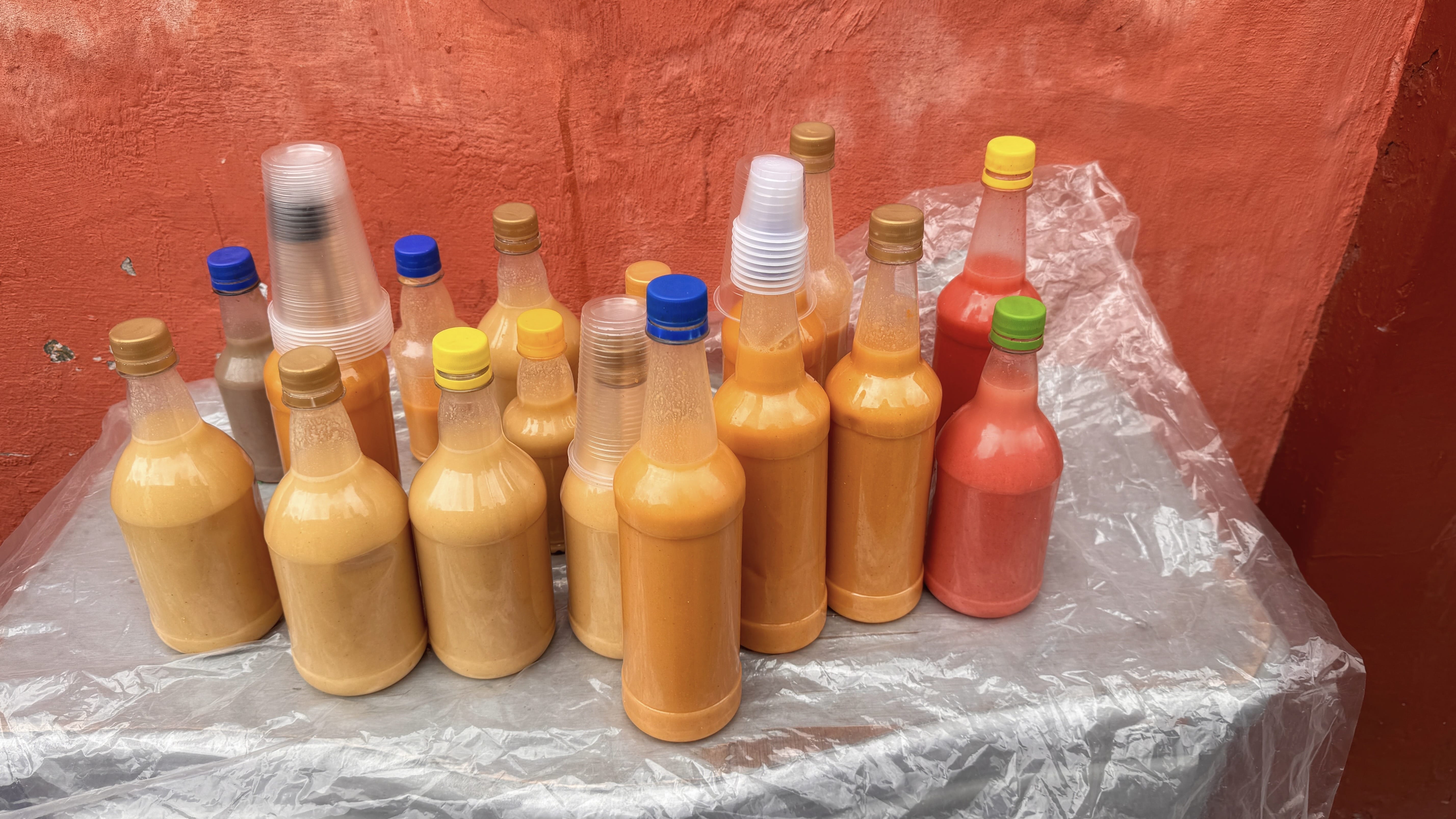
We also stopped at the Iglesia de la Candelaria, a colonial church from the late 1600s and one of Bogotá’s oldest. Inside was a beautiful gilded baroque altarpiece that covered the sanctuary wall, stacked with niches holding statues of saints. The painted ceilings and murals gave the space even more character—biblical scenes framed by ornate borders, with angels hovering above.
While we were walking around La Candelaria, our guide made a point to show me the Museo del Oro (Gold Museum). He explained that it holds one of the largest collections of pre-Hispanic gold in the world, with thousands of pieces made by Colombia’s indigenous cultures. I didn’t go inside this time, but it’s definitely something worth coming back for.
La Candelaria had so much to take in that it felt impossible to catch it all in one visit. Between the murals, the stone streets, the colonial architecture, the coffee shops, and the constant sense of history layered with daily life, I knew I’d only scratched the surface.
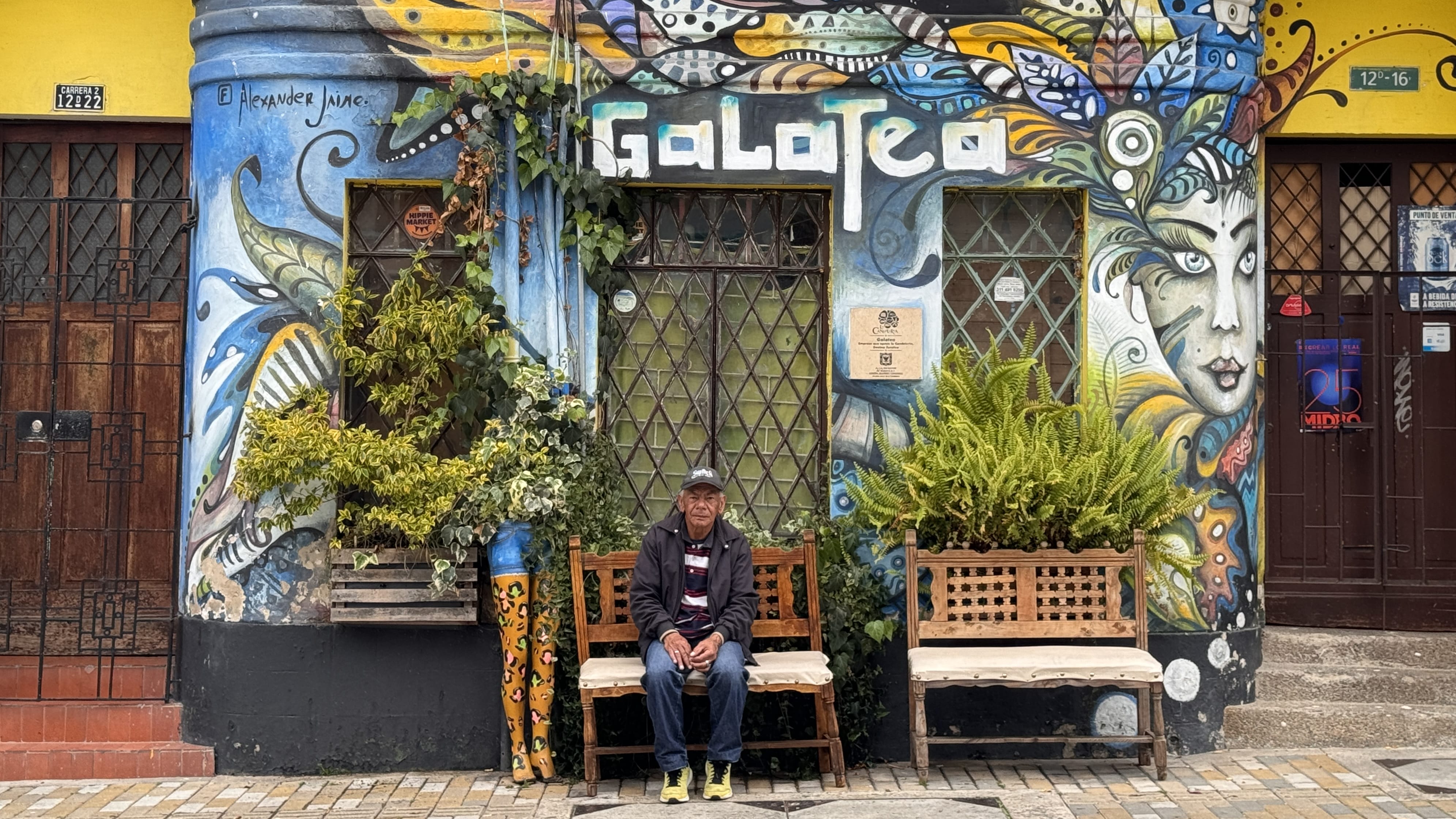
From La Candelaria we headed north into Usaquén, stopping in the San Gabriel Norte area. Sundays here are known for the Usaquén Flea Market, one of Bogotá’s most popular. The streets were crowded with stalls selling everything from jewelry and handmade crafts to second-hand goods, alongside plenty of vendors offering street food.
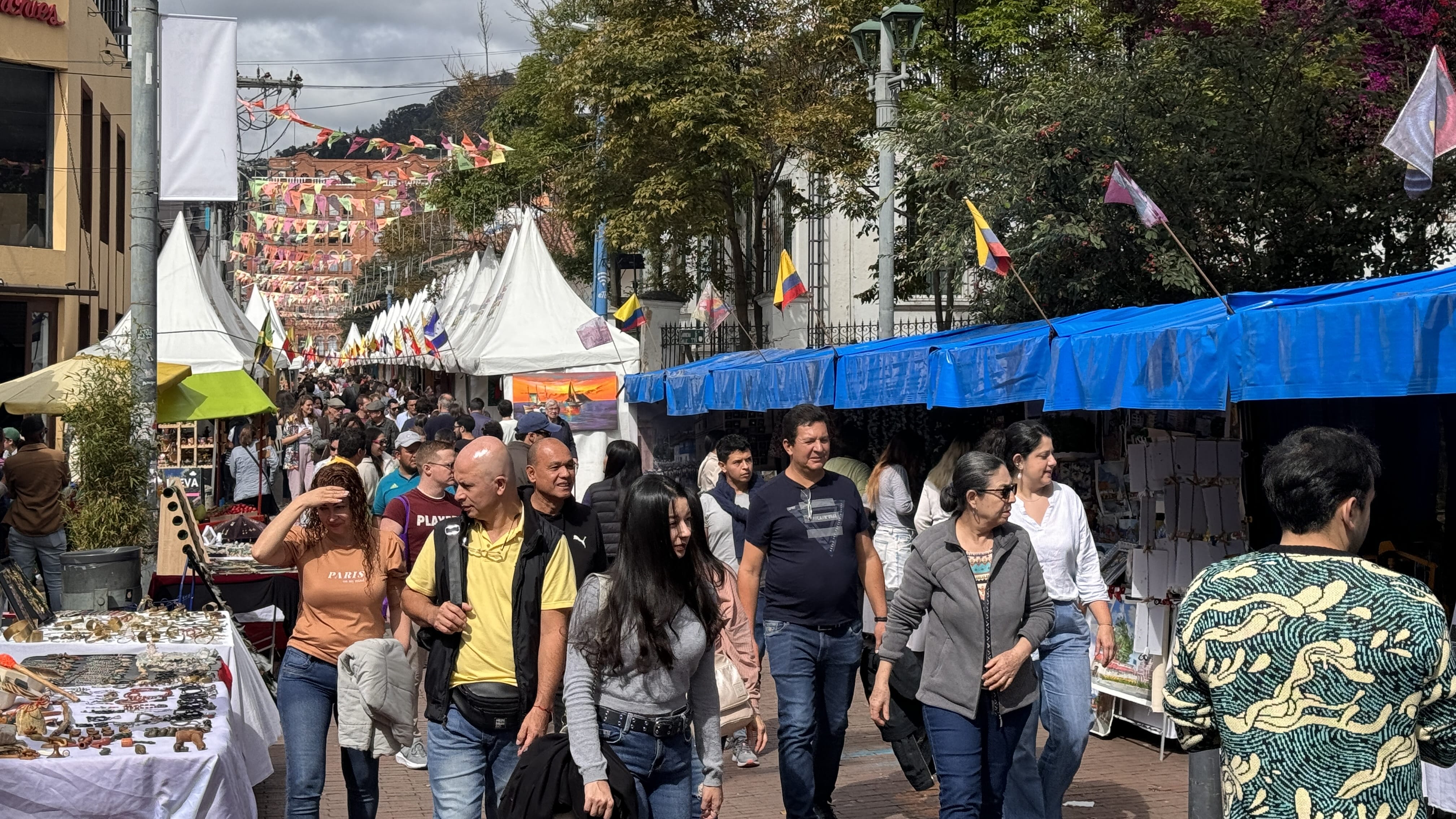
While wandering the market, we also stopped for coffee at Juan Valdez Café. In Colombia, Juan Valdez isn’t just a chain; it’s a cultural symbol. The character was created in the 1950s to represent Colombia’s coffee farmers, and over the decades he’s become a global icon of Colombian coffee. And for the record, it was another great cup of coffee.
From Usaquén we headed back south, and on the way my guide kept pointing things out—the contrast between the colonial center we’d started in, the lively flea market we’d just left, and the more modern neighborhoods in between. By the time we reached Zona Rosa, where my hotel was, I felt like I’d seen several different versions of Bogotá in a single day.
I loved finally seeing Bogotá for myself—and managing to keep safe while doing it. There’s so much more here than I could ever fit into 2 days in Bogotá, and I’d love to come back one day to dig deeper. For now, I’m just glad I got this little glimpse of Colombia’s capital: messy, colorful, layered, and full of life.
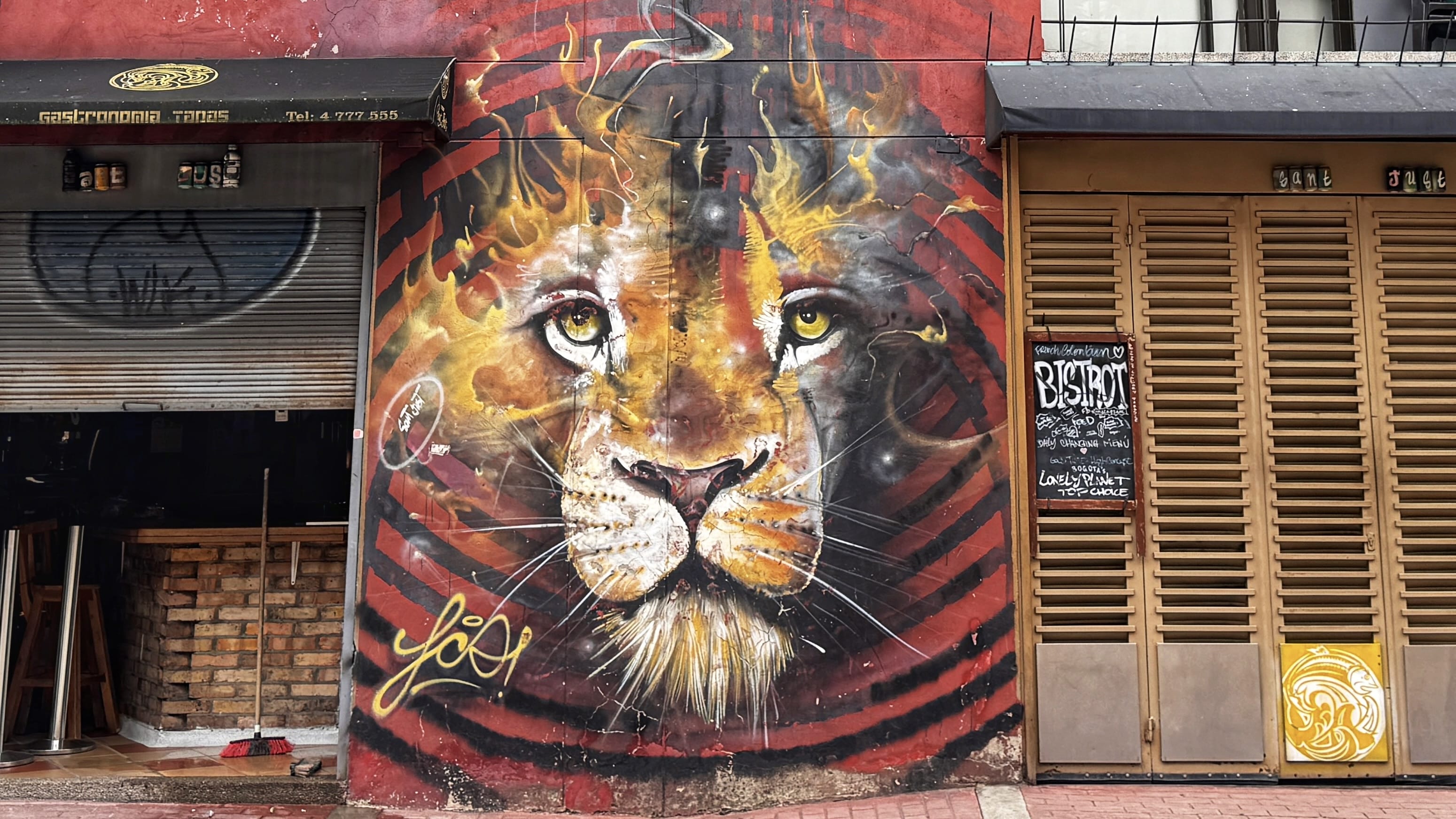

Hi, I’m JoAnne—writer, wanderer, and lover of places that surprise me. I’ve traveled to 60+ countries (and counting), usually with a camera in one hand and a notebook in the other. I’m drawn to mosaics, markets, and mountains, and I write to remember what moved me. When I’m not traveling, I’m working on my blog Travels Afoot, trying new creative projects, or planning my next adventure.